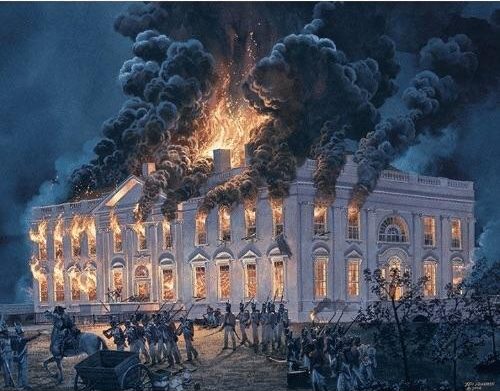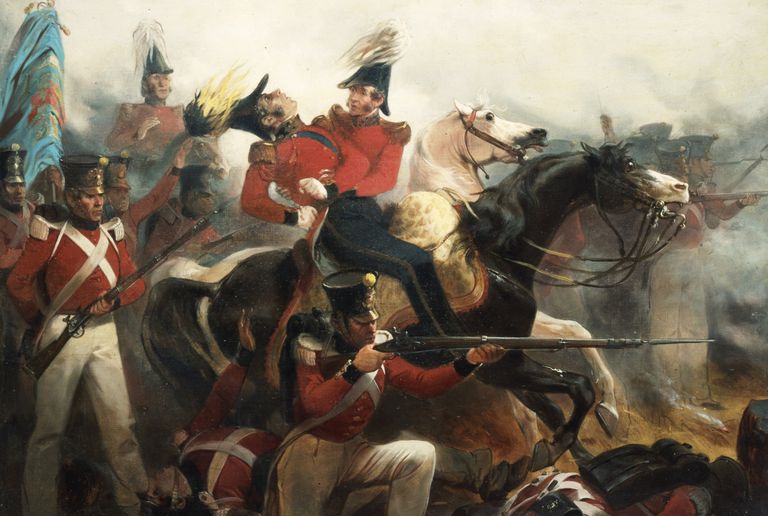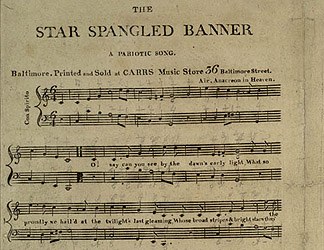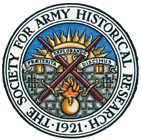The burning of the White House
The Chesapeake with its numerous navigable rivers and inlets running into was the obvious place from which to launch an attack with direct access overland to both Baltimore and Washington.
Over the following weeks, the British fought a number of minor engagements before reaching the head of the Chesapeake. In August 1814, for the first time they were faced with well organised resistance by American troops on the bridge at Bladensburg but after fierce fighting the road to Washington was opened.

On the following afternoon British forces entered Washington and began to ransack the city. The newly built White House, Capitol, Navy Yard and other public buildings were set on fire and only a violent thunderstorm during the night that extinguished the flames saved many other buildings from ruin.
The defence of Fort McHenry
British forces then moved on towards Baltimore where in September at North Point General Ross was shot dead by American snipers.

Admiral Cochrane, the C-in-C began to get cold feet at this loss but it was too late to turn back and on the 13th September the bombardment of Fort McHenry commenced from both land and sea. Fort McHenry guarded the final approach to Baltimore and would have to be destroyed before the city could be taken.

British troops landed at night but failed to advance and when dawn broke on the 14th September an enormous Stars & Stripes flag could be seen hanging from the battlements of Fort McHenry inspiring Francis Scott Key, a Baltimore lawyer, to write The Star Spangled Banner, that became the anthem of the United States of America.
The attack was called off and the Fleet sailed away first down the coast passing Maryland, Virginia and Alabama before attacking New Orleans in January 1815 where over 2,600 British troops were killed, wounded or captured. By this time, but unknown to the invaders, Britain and the United States of America had made peace at the Treaty of Ghent and the war was over.
For the United States of America their robust response had been a coming-of-age and for the British a lesson about the consequences of monopoly and the perils of amphibious warfare. Both sides soon forgot their losses and as the nineteenth century unfolded the two nations learned to share many interests.
The home depot of the Royal Berkshire Regiment (Princess Charlotte of Wales’s) was built as a consequence of the Cardwell Army reforms of 1881 that localised the British Army’s regimental system. The depot was named Brock Barracks after General Brock and was occupied by the regiment formed from the 49th (Hertfordshire) and 66th (Berkshire) Regiments of Foot. My father served as Adjutant of the Depot between 1936-1938.
Star Spangled Banner by the United States Air Force Band,
from the album 76 Patriotic Songs: 4th of July and Memorial Day. Available to purchase from Amazon.

